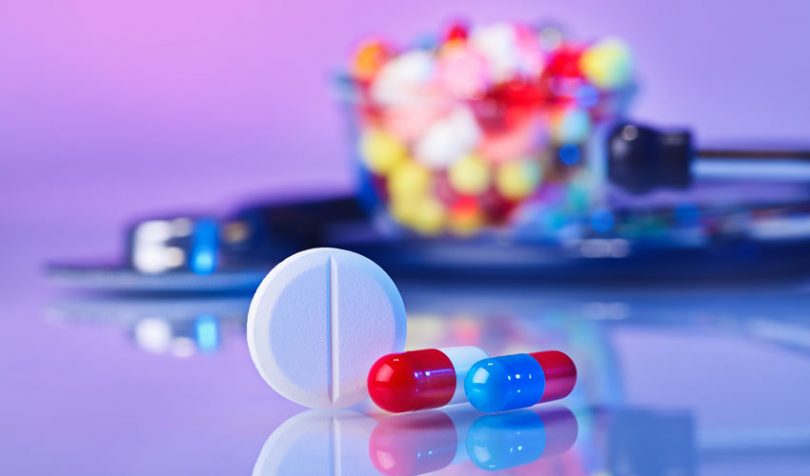
In the vast and evolving landscape of medicine, life-saving drugs play an irreplaceable role in preventing, managing, and curing deadly diseases. These drugs are the foundation of modern healthcare, offering hope to millions of people worldwide. From antibiotics that combat bacterial infections to chemotherapy drugs that fight cancer, these medications continue to push the boundaries of human survival. This article explores some of the most critical life-saving drugs, their impact, and how they have transformed the world of medicine.
1. The Miracle of Antibiotics
One of the greatest medical discoveries of all time is antibiotics. Before their introduction, bacterial infections like tuberculosis, pneumonia, and sepsis were often fatal. The discovery of penicillin by Alexander Fleming in 1928 revolutionized medicine, leading to the development of various antibiotic classes such as cephalosporins, macrolides, and fluoroquinolones.
Drugs like amoxicillin, azithromycin, and ciprofloxacin continue to save lives by treating bacterial infections effectively. However, antibiotic resistance is a growing threat, requiring new research to develop alternative treatments and ensure these drugs remain effective. Ibrutinib exporter supply this important cancer and immune disease medicine to hospitals and pharmacies worldwide.
2. Vaccines: Preventing Deadly Diseases
Vaccines are not traditionally considered drugs, but they play a crucial role in preventing life-threatening diseases. Vaccination programs have eradicated smallpox, drastically reduced polio cases, and protected millions from diseases like measles, hepatitis B, and HPV-related cancers.
Life-saving vaccines such as the MMR (measles, mumps, and rubella), pneumococcal, and COVID-19 vaccines have significantly reduced mortality rates worldwide. The development of mRNA vaccines, such as those by Pfizer-BioNTech and Moderna, marked a new era in rapid vaccine production and response to emerging diseases.
3. Insulin: A Lifeline for Diabetics
Diabetes, particularly Type 1, was once a death sentence before the discovery of insulin. In 1921, Frederick Banting and Charles Best isolated insulin, providing a groundbreaking treatment for diabetics. Today, insulin formulations, including rapid-acting, long-acting, and intermediate-acting types, help millions of people manage their blood sugar levels.
Despite its life-saving potential, insulin affordability remains a global issue. Advocacy for lower prices and increased accessibility is essential to ensure that diabetics everywhere can continue to benefit from this critical medication.
4. Chemotherapy: Fighting Cancer Head-On
Cancer treatment has advanced significantly, with chemotherapy being one of the primary tools against the disease. Drugs such as etoposide, doxorubicin, and cisplatin have been instrumental in shrinking tumors and prolonging survival in cancer patients.
Targeted therapies, such as imatinib (Gleevec) for leukemia and trastuzumab (Herceptin) for breast cancer, have further revolutionized cancer treatment. These drugs target specific cancer cells, reducing side effects and improving survival rates. Immunotherapy, another breakthrough, helps the body’s immune system recognize and fight cancer cells more effectively.
5. Antiretroviral Drugs: Transforming HIV/AIDS Treatment
HIV/AIDS was once considered a death sentence, but the development of antiretroviral therapy (ART) has turned it into a manageable chronic condition. Drugs such as tenofovir, efavirenz, and dolutegravir have significantly improved the quality of life for people living with HIV.
The combination of ART drugs suppresses viral replication, preventing the progression to AIDS and reducing transmission rates. With continued research, newer treatments aim to provide longer-lasting protection and ultimately find a cure for HIV.
6. Blood Thinners and Heart Medications
Cardiovascular diseases are among the leading causes of death globally. Blood thinners like warfarin and newer anticoagulants such as apixaban and rivaroxaban help prevent deadly blood clots, strokes, and heart attacks.
Other essential heart medications include beta-blockers (such as metoprolol), ACE inhibitors (such as lisinopril), and statins (such as atorvastatin) that help control blood pressure, reduce cholesterol, and prevent heart disease complications. These medications have collectively saved millions of lives by managing cardiovascular conditions effectively.
7. Anti-Seizure Medications: Controlling Epilepsy
Seizure disorders, including epilepsy, can be life-threatening if left untreated. Medications such as valproate, carbamazepine, and levetiracetam help prevent seizures and allow patients to lead normal lives.
Advances in epilepsy treatment continue to provide safer and more effective options, including newer drugs like brivaracetam and perampanel. The goal is to minimize side effects while maximizing seizure control for better patient outcomes.
Read more: Specialitymedz
8. Corticosteroids: Lifesavers in Critical Conditions
Corticosteroids such as dexamethasone, prednisone, and hydrocortisone are vital in treating severe allergic reactions, asthma, autoimmune diseases, and even COVID-19 complications.
During the COVID-19 pandemic, dexamethasone proved to be one of the few effective treatments for severely ill patients, reducing inflammation and improving survival rates. These drugs continue to be essential in emergency medicine and chronic disease management.
9. Pain Management and Anesthesia
Pain control is an essential aspect of medical care. Opioids such as morphine and fentanyl are crucial for managing severe pain, particularly in cancer patients and post-surgical cases. However, opioid misuse has led to a global crisis, highlighting the need for balanced pain management strategies.
Non-opioid pain relievers like acetaminophen and NSAIDs (ibuprofen, naproxen) provide effective pain relief for mild to moderate pain. Advances in pain management focus on finding safer alternatives while addressing the risks of addiction.
10. Antimalarial and Antifungal Drugs
Malaria, caused by the Plasmodium parasite, remains a global health concern. Life-saving antimalarial drugs like artemisinin-based combination therapies (ACTs), chloroquine, and mefloquine have significantly reduced malaria deaths.
Fungal infections, particularly in immunocompromised patients, can be deadly. Drugs like fluconazole, amphotericin B, and echinocandins treat life-threatening fungal infections effectively. Continued efforts in drug development are crucial to combat emerging drug-resistant strains.
11. Emergency and Life-Supporting Drugs
In emergencies, certain drugs can mean the difference between life and death. Epinephrine (adrenaline) is used in anaphylactic reactions and cardiac arrest. Naloxone, an opioid overdose reversal drug, has saved countless lives during the opioid crisis.
Other critical drugs include atropine for bradycardia (slow heart rate), dopamine for shock management, and norepinephrine for severe hypotension (low blood pressure). These medications are essential in emergency medicine and intensive care units.
12. Organ Transplant Medications
For patients who undergo organ transplants, immunosuppressive drugs are essential to prevent organ rejection. Drugs like cyclosporine, tacrolimus, and mycophenolate mofetil help maintain the delicate balance between immune suppression and infection risk.
Without these medications, organ transplant recipients would face high rejection rates and limited survival. Research into better immunosuppressive strategies continues to improve transplant success rates and patient longevity.
The Future of Life-Saving Drugs
With advances in biotechnology, personalized medicine, and gene therapy, the future of life-saving drugs looks promising. Scientists are exploring CRISPR gene-editing technology, regenerative medicine, and artificial intelligence-driven drug discovery to develop more effective and targeted treatments.
While challenges such as drug affordability, accessibility, and resistance remain, continued research and innovation will ensure that life-saving drugs remain a cornerstone of global health. The goal is not just to prolong life but to improve its quality, making sure that every individual has access to the medical breakthroughs they need.
Life-saving drugs have transformed human health, turning once-fatal diseases into manageable conditions. As medical science advances, the next generation of medications will further push the boundaries of what is possible, offering hope to millions in need.









